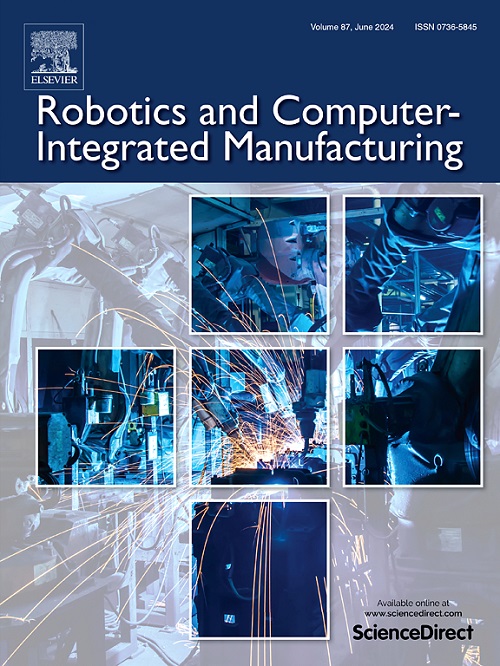Digital twin and AI-driven robotic embodied control system: a novel adaptive learning and decision optimization method
IF 11.4
1区 计算机科学
Q1 COMPUTER SCIENCE, INTERDISCIPLINARY APPLICATIONS
引用次数: 0
Abstract
Traditional robot control methods often encounter limitations such as lengthy development cycles and insufficient flexibility when addressing dynamic production environments and complex task requirements. To overcome these challenges, this paper constructs an integrated robot embodied control (EC) system that organically combines digital twins (DT), machine vision, and deep reinforcement learning (DRL). The method follows a closed-loop perception-decision-action framework. First, machine vision senses the environment in real time and precisely maps the 3D pose of the target object to the DT space. Second, DRL is conducted in the DT environment for training and strategy optimization. Finally, continuous state synchronization between the physical robot and the DT enables cross-environment policy transfer and online optimization. Taking the robotic arm pressing an emergency stop button as a representative task scenario, experimental results show that the system achieves a task success rate of 88% in the DT environment and 73% in the real physical environment, which was further improved to 76% through fine-tuning. In an extended lamp switch task, the success rate reached 79%, further verifying the generality and cross-environment adaptability of the framework. Overall, this integrated system significantly enhances the intelligence and operational efficiency of robotic systems, demonstrating its potential for achieving programming-free autonomous control in complex industrial environments.
数字孪生和人工智能驱动的机器人嵌入控制系统:一种新的自适应学习和决策优化方法
传统的机器人控制方法在处理动态生产环境和复杂的任务要求时,往往会遇到开发周期长、灵活性不足等局限性。为了克服这些挑战,本文构建了一个有机结合数字孪生(DT)、机器视觉和深度强化学习(DRL)的集成机器人体现控制(EC)系统。该方法遵循闭环感知-决策-行动框架。首先,机器视觉实时感知环境,并将目标物体的3D姿态精确映射到DT空间。其次,在DT环境下进行DRL,进行训练和策略优化。最后,物理机器人和DT之间的连续状态同步实现了跨环境策略传递和在线优化。以机械臂按下紧急停止按钮为代表性任务场景,实验结果表明,该系统在DT环境下的任务成功率为88%,在真实物理环境下的任务成功率为73%,通过微调进一步提高到76%。在扩展的灯开关任务中,成功率达到79%,进一步验证了框架的通用性和跨环境适应性。总体而言,该集成系统显著提高了机器人系统的智能和运行效率,展示了其在复杂工业环境中实现无编程自主控制的潜力。
本文章由计算机程序翻译,如有差异,请以英文原文为准。
求助全文
约1分钟内获得全文
求助全文
来源期刊
CiteScore
24.10
自引率
13.50%
发文量
160
审稿时长
50 days
期刊介绍:
The journal, Robotics and Computer-Integrated Manufacturing, focuses on sharing research applications that contribute to the development of new or enhanced robotics, manufacturing technologies, and innovative manufacturing strategies that are relevant to industry. Papers that combine theory and experimental validation are preferred, while review papers on current robotics and manufacturing issues are also considered. However, papers on traditional machining processes, modeling and simulation, supply chain management, and resource optimization are generally not within the scope of the journal, as there are more appropriate journals for these topics. Similarly, papers that are overly theoretical or mathematical will be directed to other suitable journals. The journal welcomes original papers in areas such as industrial robotics, human-robot collaboration in manufacturing, cloud-based manufacturing, cyber-physical production systems, big data analytics in manufacturing, smart mechatronics, machine learning, adaptive and sustainable manufacturing, and other fields involving unique manufacturing technologies.

 求助内容:
求助内容: 应助结果提醒方式:
应助结果提醒方式:


